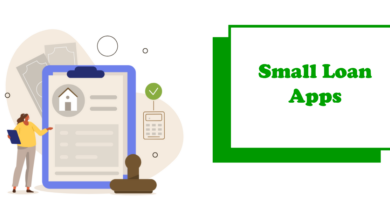Loan Apps vs. Traditional Bank Loans: Pros, Cons, and Which to Choose
In today’s fast-paced financial world, borrowing money has become simpler than ever—especially in India, where both loan apps and traditional banks offer various loan options. But with so many choices, how do you decide which path is right for you?
Let’s begin by understanding the foundation of both systems.
What Are Loan Apps?
Loan apps are digital platforms—typically mobile apps—that offer quick loans, often without heavy paperwork. Popular in India due to smartphone penetration, examples include PaySense, KreditBee, CASHe, and NIRA. These apps cater to tech-savvy, urban populations, and often disburse loans in under 24 hours.
Key Features:
- Minimal to no collateral required
- 100% digital process
- Loans from ₹1,000 to ₹5,00,000
- Often require only PAN and Aadhaar for verification
What Are Traditional Bank Loans?
Traditional bank loans are financial products offered by commercial banks, cooperative banks, and NBFCs (Non-Banking Financial Companies). These loans are more structured and require comprehensive documentation, including income proof, credit history, and bank statements.
Eligibility Criteria Comparison
Loan Apps: Who Qualifies?
Loan apps are designed to be inclusive. Whether you’re a student, gig worker, or entry-level employee, many loan apps have minimal entry barriers.
Typical Criteria:
- Age: 21-55 years
- Income: ₹15,000/month onwards
- PAN, Aadhaar, and basic digital footprint
This makes them attractive to first-time borrowers or those with thin credit files.
Traditional Banks: Who Qualifies?
Banks have more rigid eligibility norms.
Standard Requirements:
- Age: 21-60 years
- Stable income (minimum ₹25,000-₹30,000/month)
- Good credit score (usually 700+)
- 3-6 months’ salary slips and IT returns
This often excludes freelancers and self-employed individuals with irregular income.
Speed and Accessibility
Loan Apps:
- Disbursal within minutes to 24 hours
- Minimal documentation
- Ideal for emergency expenses
Banks:
- Takes 5-10 working days
- Includes in-person verification, phone calls, and background checks
- Ideal for planned, large-value loans
Mobile Penetration and Accessibility in India
India has over 600 million smartphone users, making loan apps highly accessible. Meanwhile, rural areas still depend heavily on banking correspondents and microfinance due to limited app literacy.
Interest Rates and Fees
Loan App Charges and Hidden Fees
While fast, loan apps may charge 20% to 36% annual interest rates. Some even add hidden charges like:
- Processing fee: ₹500 to ₹2,000
- Late payment penalty: ₹500/day
- Service tax or app usage fees
Transparency remains a challenge.
Bank Loan Interest Structures
Banks are governed by RBI rules, offering lower and more transparent interest rates:
- Personal loans: 10.5% to 16%
- Home loans: 8.5% to 10%
- Auto loans: 8% to 11%
Plus, they follow standardized processing fee guidelines and clearly disclose EMI structures.
Data Privacy and User Experience
Privacy Risks with Loan Apps
Several Indian users report:
- Contact list access
- Camera and gallery access
- Intimidation via SMS in case of default
Users must be cautious while granting app permissions.
Customer Experience with Banks
Though slower, banks offer:
- More trust and predictability
- Face-to-face service
- Physical documentation
Pros and Cons Summary Table
| Criteria | Loan Apps | Traditional Bank Loans |
|---|---|---|
| Speed | Instant | Slow |
| Documentation | Minimal | Heavy |
| Interest Rate | High | Moderate |
| Loan Amount | Low to Moderate | Moderate to High |
| Repayment | Less flexible | Flexible EMIs |
| Privacy | Risky | Secure |
| Regulation | Emerging | Strong |
| Ideal For | Emergencies, Low-income | Salaried, Long-term |
Frequently Asked Questions (FAQs)
Q1. Are loan apps safe in India?
Not all. Use RBI-approved apps listed on their website and avoid those asking for unnecessary permissions.
Q2. Can I get a loan without a CIBIL score?
Yes, many loan apps offer loans to users with little or no credit history, unlike banks.
Q3. What is the maximum amount a loan app offers?
Usually up to ₹5 lakh, but some NBFC-backed apps may offer more.
Q4. Are interest rates higher in loan apps?
Yes, typically 20% to 36% APR compared to banks’ 10%-16%.
Q5. Can I prepay a bank loan?
Yes, most banks allow prepayment with minimal or no penalty, especially for floating-rate loans.
Q6. Which loan type is best for self-employed individuals?
Loan apps or NBFCs like Bajaj Finserv or Lendingkart are more lenient than traditional banks.



